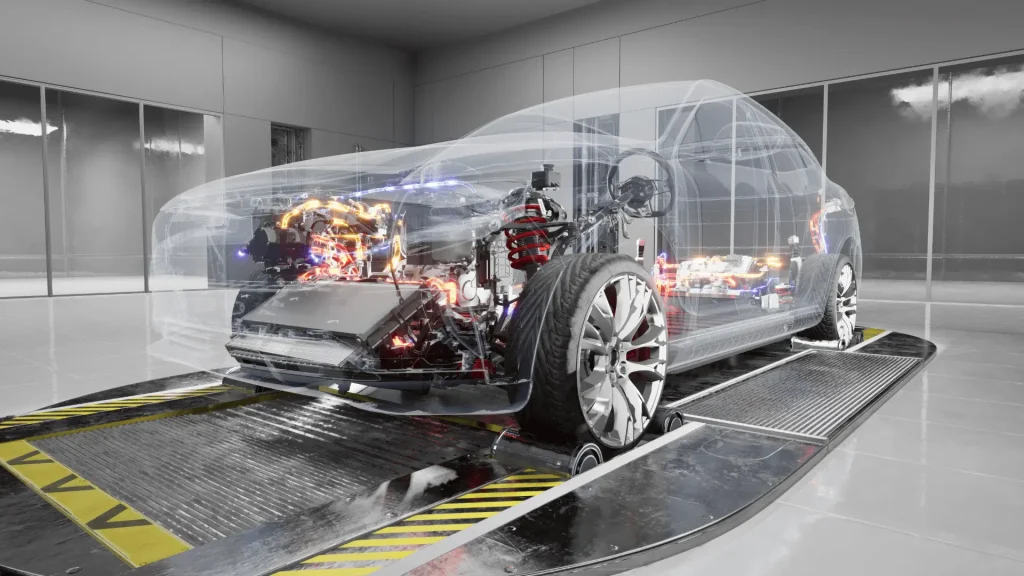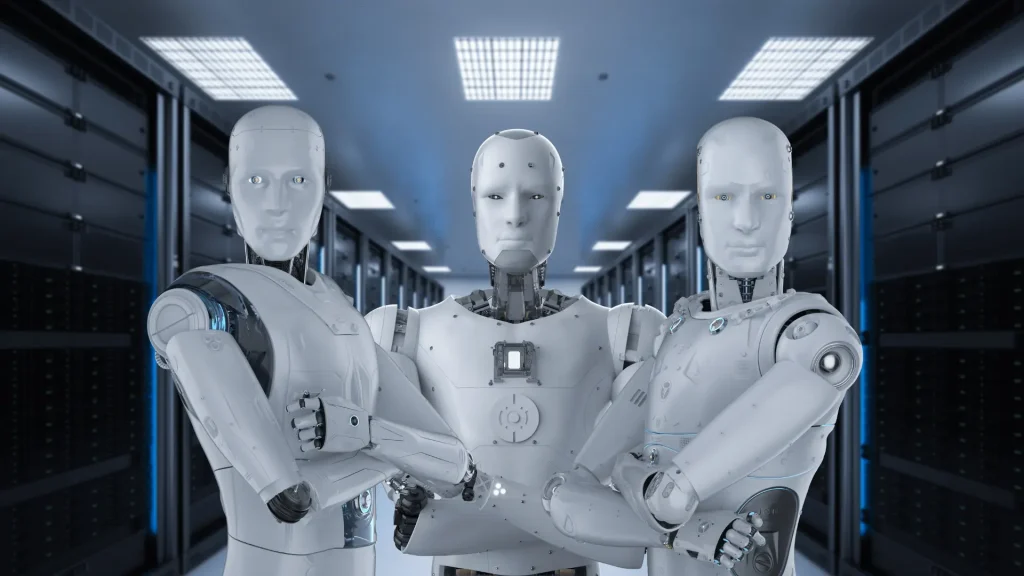You’ve seen AI create art and write code. But what it’s about to do next will change everything.
We’re at an inflection point. Not because AI suddenly became smarter overnight, but because the nature of AI progress is shifting. For the past three years, the story was simple: bigger models, better results. But 2024-2025 marks something different. We’re moving from “more powerful” to “smarter,” from single-task tools to multi-capability systems, from research papers to real-world applications.
The headlines obsess over AGI timelines and job apocalypse scenarios. But the actual breakthroughs happening right now are far more interesting – and far more real.
So what’s actually coming? Let’s separate hype from reality.
The Current Moment: Why 2024-2025 Matters
Here’s the truth: the age of scaling up models forever is ending. We’ve mostly hit the returns-diminishing point on just making models bigger. That doesn’t mean progress stops – it means the type of progress changes.
Three things have fundamentally shifted:
First, we’ve moved beyond scale. Throwing more parameters at problems isn’t the only path forward anymore. We’re seeing breakthroughs in reasoning, efficiency, and multimodal understanding – capabilities that don’t require massive increases in model size.
Second, new approaches are emerging from labs. Reasoning models like OpenAI’s o1 take a different approach: they think before they respond. Video generation systems like Sora generate minute-long videos from text. Scientific AI systems like AlphaFold 3 don’t generate convincing fiction – they generate novel scientific knowledge that researchers validate and use.
Third, hype cycles are recalibrating. We’ve moved past the “AGI by next Tuesday” era into more realistic expectations about what AI can and can’t do. That’s actually good. Accurate predictions are more useful than exciting ones.
The real next wave of generative AI isn’t about one breakthrough. It’s about three specific areas that represent genuine inflection points.
Breakthrough 1: Video Generation – The Content Economy Collapses
Imagine creating a 60-second professional video the way you write a paragraph of text. That’s no longer imagination.
What’s Happening Now
OpenAI’s Sora can generate one-minute videos from a text description. In September 2025, Sora 2 arrived with cinema-quality improvements and synchronised audio – though maximum length reaches 25 seconds for Pro users. Despite the length limitation, this represents a significant step toward production-ready video generation. Google’s Veo does similar work. Runway and Pika offer consumer-friendly versions. These aren’t perfect – they sometimes break physics, occasionally generate unsettling glitches – but they’re good enough to be immediately useful.
This is significant because video production was the last fortress of specialisation. Writing? AI handles it. Images? AI handles it. But video required equipment, skills, time, and money. The content creation bottleneck was always video.
Not anymore.
Why This Matters
Video is a multi-billion dollar market. Every company wants video content, educators wants video lessons, and marketers wants video ads. But producing video is expensive and time-intensive. A professional one-minute video might cost $5,000-50,000 to produce, take weeks, require specialised talent.
AI video collapses those economics. Dramatically.
A marketing professional can now generate product videos without hiring a production company. An educator can create instructional videos without a film crew. A content creator can produce 10x more content. The time-to-production for video content shrinks from weeks to minutes.
The Concerns (And Reality)
Yes, deepfakes are a concern. Indistinguishable video from text opens obvious opportunities for misuse. But here’s the reality: authentication technology is being developed simultaneously. We’ll likely see watermarking systems that prove origin. Society will adapt, like it did with Photoshop.
The job disruption is real but slower than headlines suggest. Video editors and animators will face pressure, yes. But many will shift to AI supervision roles – using AI tools to handle tedious work while focusing on creative direction and refinement. This pattern happened with photography (painters didn’t disappear, they adapted) and digital design (don’t hear much about Photoshop replacing designers).
Timeline
- 2025: Professional and enterprise adoption. Marketers testing, educators piloting, companies exploring use cases.
- 2026-2027: Consumer adoption. Social media platforms integrating AI video tools. Apps making it as easy as uploading a photo.
- 2028+: Quality reaching “indistinguishable from human” threshold, requiring authentication solutions.
The bottom line: Video generation is real, it’s arriving now, and it’s the most immediately disruptive of the three breakthroughs.
Breakthrough 2: Advanced Reasoning – AI That Actually Thinks
Here’s what changed in late 2024: OpenAI previewed o1 on September 12, 2024, with full release on December 5, 2024, and the narrative about AI suddenly became more complicated.
The Shift From Scale to Strategy
GPT-4 is powerful because it’s big. More parameters, better predictions. o1 is powerful for a different reason: it’s learned to think about problems before solving them.
Technical explanation: The model was trained to show its reasoning process. Instead of predicting the next token immediately, o1 takes 5-30 seconds to work through a problem, showing internal reasoning steps, catching mistakes, revising approaches. It’s not faster. It’s smarter.
What o1 Actually Does
The benchmarks tell the story. On SAT Math, GPT-4 scored 89th percentile. o1 demonstrates comparable or superior performance on complex reasoning tasks; complex coding challenges, it handles them with fewer errors; and on theorem proving (notoriously hard for AI), it succeeds where previous models failed.
What it doesn’t do: casual chat. Answering quick questions. Email responses. It’s slower for these tasks, not better. It’s specialised for hard problems.
Why This Matters for Work
- For scientists solving complex equations: force multiplier.
- For engineers debugging intricate systems: significant improvement.
- For researchers reasoning through novel problems: transformative.
- For most of us answering simple questions: it’s slower and unnecessary.
This is important because it signals a fundamental shift. We’re not building general-purpose super-AI. We’re building specialised reasoning engines that excel in specific domains. That’s actually more useful and more achievable.
The Competitive Race
Anthropic is implementing similar reasoning capabilities in Claude. Google is building reasoning into Gemini 2.0. Meta is adding reasoning to Llama. By end of 2025, every major AI company will have reasoning models.
This isn’t a winner-takes-all market. Different companies’ reasoning approaches have different strengths. OpenAI’s is most mature now, but that window closes quickly.
Breakthrough 3: Scientific Discovery – The One No One’s Talking About
While headlines obsess over ChatGPT and AI replacing writers, the most consequential AI breakthrough is happening in molecular biology.
AlphaFold 3: Science, Not Hype
In 2020, AlphaFold solved the protein folding problem – predicting 3D protein structures from amino acid sequences. It was hailed as revolutionary. Deservedly so.
In 2024, AlphaFold 3 took it further. DeepMind’s model expanded prediction capabilities to proteins, protein complexes, RNA, DNA interactions, and small molecules. The AlphaFold Server has enabled researchers to generate millions of novel structural predictions. Not iteratively. Not gradually. A massive leap in biological knowledge.
Here’s what matters: AlphaFold 3 predictions are being actively tested and validated by the global scientific community, including researchers at institutions like MIT. The predictions are demonstrably valuable. The AI generated knowledge that humans are confirming and now using.
That’s not marketing. That’s real.
AI as Scientific Instrument
Drug discovery now uses AI candidate screening. Pharmaceutical companies use AI to identify promising compounds months faster than traditional screening. Materials scientists use AI to discover new materials with desired properties. Climate researchers use AI for better weather and climate predictions. Genomics labs use AI for sequence analysis and variant identification.
These aren’t replacements for human scientists. They’re productivity multipliers. The tedious, time-consuming work gets automated. Scientists focus on interpretation and insight.
South African Implications
Scientific AI matters especially for countries without massive budgets for specialised infrastructure. Drug discovery research. Agricultural breeding for drought-resistant crops. Climate modeling for flood and drought prediction. Biotech research without multi-million dollar lab setups.
South Africa has research excellence in several fields – and it’s positioned at the forefront of African AI innovation. The University of Pretoria ranks #1 for AI research in South Africa and #2 in Africa (2025). The CAIR network operates nodes at nine universities, strengthening AI research capabilities across the region. Universities like Wits, Stellenbosch, UCT, and UP are actively integrating scientific AI tools. Google DeepMind and AIMS are running “AI for Science” programs focused on African challenges.
This isn’t just research advantage – it’s economic opportunity. Scientific AI could amplify South Africa’s position as an African tech hub. But it requires staying current with tools, building expertise, and ensuring local benefits aren’t captured by foreign capital. That’s the challenge and opportunity.
Timeline
- 2025: Specialised scientific AI tools become standard in pharma, biotech, and major research institutions.
- 2026: Integration into university research workflows globally, including South African universities.
- 2027+: Routine use in novel discovery. The tools become as commonplace as lab equipment.
What Won’t Happen (At Least Not Soon)
Here’s where I earn credibility by being honest.
AGI in 5 Years
The narrative: “AI will achieve human-level general intelligence by 2026.”
The reality: Current models are narrow specialists. ChatGPT is brilliant at language. o1 is brilliant at reasoning. Vision models are brilliant at images. None of them are general.
We also don’t even have a mathematical definition of “general intelligence” that we could measure. The barrier isn’t computational – it’s conceptual.
Honest assessment: We’re likely decades away, if it’s possible at all.
AI Consciousness
Claim: “AI will become conscious.”
Reality: We have no evidence of subjective experience in current models. We also can’t define consciousness well enough to measure it.
This is a philosophical question wearing a technical disguise. Don’t confuse them.
Mass Job Replacement (By 2027)
Narrative: “AI will replace 90% of jobs by 2027.”
Reality: Job displacement is real. But mass replacement moves slower than headlines suggest. Economic incentives actually favor augmentation (cheaper) over full automation. It’s often more cost-effective to make workers 2x more productive than to replace them.
What is happening: Junior roles (junior developer, junior copywriter, junior analyst) face pressure. Senior roles increase in value. Specific fields (customer service, data entry, content writing) see disruption. Wholesale replacement? Not realistic on that timeline.
Fully Autonomous Agents
Claim: “AI agents will handle all tasks independently.”
Reality: Current agents fail frequently. They hallucinate., miss context, and don’t handle novel situations well. They need human oversight for critical tasks. That said, October 2025 saw progress: Google’s Gemini 2.5 Computer Use enables agents to interact with web interfaces autonomously. These are narrow but useful – helpful for web automation and information retrieval tasks.
Timeline: 2-3 years for narrow domains (specific tasks in specific contexts), longer for general purpose agents. Expect specialised autonomous agents for well-defined workflows before general-purpose agents emerge.
The Competitive Landscape: Power Dynamics Shifting
Who’s winning the AI race? More importantly: what does “winning” even mean when open-source is catching up?
- OpenAI maintains frontier capabilities (o1, Sora) and benefits from first-mover advantage. But they’re not getting proportionally smarter faster – the gap is narrowing.
- Google has integrated AI into its entire ecosystem and owns scientific breakthroughs (AlphaFold). The moat isn’t capability – it’s distribution.
- Anthropic is winning on reputation for safety and values-alignment. Growing rapidly. Premium positioning. September 2025 release of Claude Sonnet 4.5 and October 2025 release of Haiku 4.5 demonstrate rapid advancement in reasoning capabilities.
- Meta took the open-source route, releasing Llama models freely. Long-game strategy. Lower-capability models right now, but rapidly closing gap.
The Disruption: Open-source Llama 3.2 matches original GPT-4 performance on general knowledge tasks (MMLU ~86%) but trails on complex reasoning (math ~52% vs 70%). Deployment costs vary significantly by provider and model size, but Llama 3.2 deployment ($0.12-0.90 per million tokens) is substantially cheaper than full GPT-4 models ($3-12 per million tokens). The price-to-performance gap keeps closing. This means:
- Proprietary models can’t maintain moats forever
- Smaller companies and researchers get access to capable models
- Decentralisation accelerates
- South Africa can leverage open-source without reliance on US companies
This is more significant than it appears. It’s the difference between “AI innovation happens in Silicon Valley” and “AI innovation happens everywhere.”
What This Means For You
If You’re a Tech Professional
AI skills are increasingly valuable for the next 2-3 years. But the specific skills matter. Prompt engineering is useful now but shorter-lived. Understanding your domain + AI is more valuable than AI alone. Learn open-source tools for experimentation. The gap between proprietary and open-source capabilities is closing, so lean into the tools that work locally.
If You’re a Business Decision-Maker
Generative AI ROI is real but requires strategy. Don’t deploy chatbots and expect magic. Video and reasoning capabilities open new use cases. Open-source tools might deserve evaluation for cost and control. The timeline of disruption is 2025-2027. Plan accordingly.
If You’re a South African Professional
Opportunity: You can leverage open-source AI without dependence on US companies. Risk: Skill gaps widen if adoption moves too fast. Potential: Scientific AI could accelerate local research. Challenge: Ensuring benefits aren’t captured by foreign capital.
The next few years are your window to get ahead of this curve.
The Realistic Future
The most important AI stories aren’t about AI becoming superhuman. They’re about AI becoming more useful, more specialised, and more integrated into the work we actually do. That’s the real story of 2025-2027.
Video generation collapses content creation economics. Advanced reasoning enables genuine problem-solving. Scientific discovery accelerates research. Open-source convergence democratises access. These are real, happening now, and far more consequential than AGI speculation.
The inflection point isn’t when AI becomes conscious or superintelligent. It’s when AI becomes so useful that it’s indispensable. We’re already past that point for some tasks. 2025-2027 is when we hit the next threshold.
What You Should Do
- This week: Explore one AI capability relevant to your field. Try video generation if you create content. Experiment with o1 if you solve complex problems. Use scientific AI tools if you research.
- This month: Distinguish hype from reality in AI news. When you see a headline about AI, ask: Is this real and deployed? Or is it research that might ship in 3-5 years? Become skeptical. Become accurate.
- This year: Build skills that combine domain expertise with AI literacy. The future belongs to people who know their field AND understand AI, not pure AI specialists without domain grounding.
Your Question For Us
What’s the AI breakthrough you’re actually watching? Video, reasoning, scientific discovery, or something else entirely? What capability would matter most to your work or field?
If you want to go deeper, subscribe to Spatter Media. We’re building out detailed guides on each of these breakthroughs: how video generation actually works, deep dives on reasoning models, how scientific AI is reshaping research.
The future of generative AI isn’t in the headlines. It’s in the labs, the applications, the real breakthroughs happening right now. That’s what we cover.











